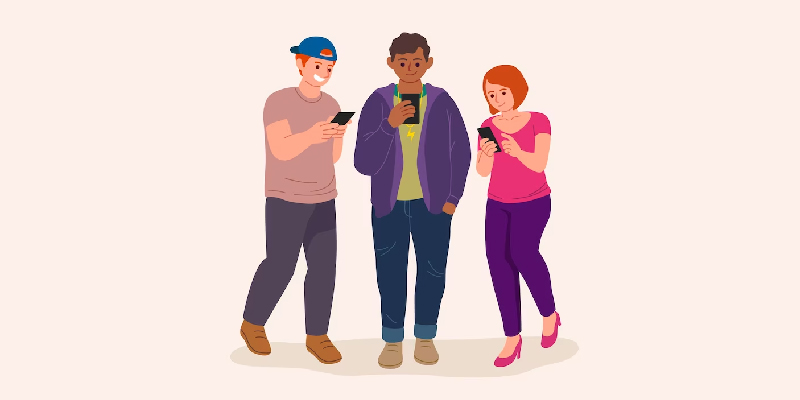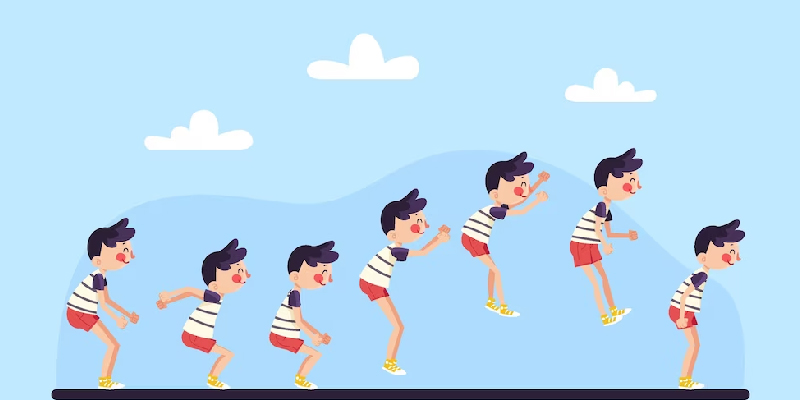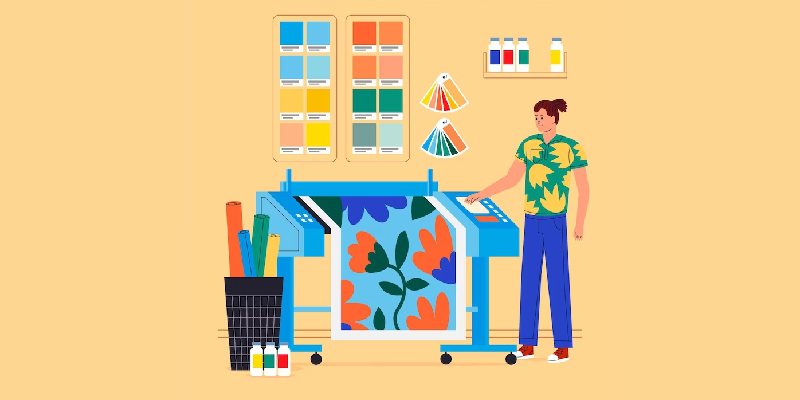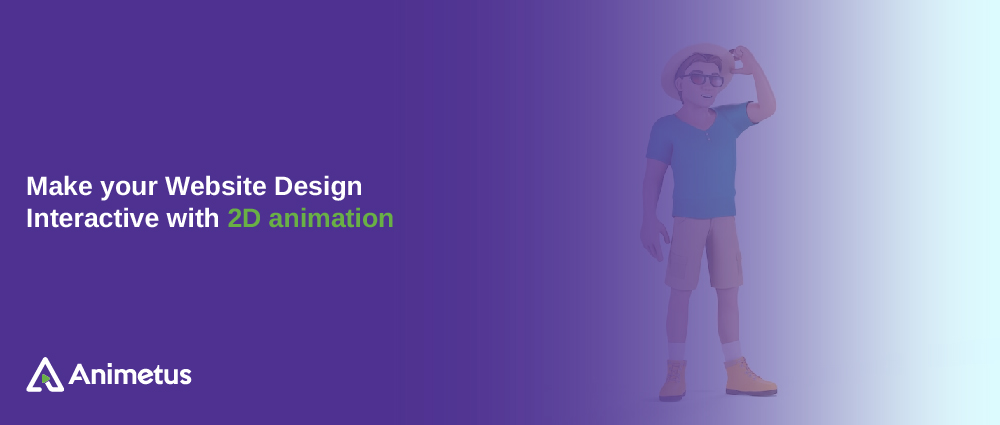In the ever-evolving scenery of web design, innovative techniques continue to emerge, enthralling people and improving customer experiences. One such technique that has taken the design globe by storm is 2D animation. Far from being limited to cartoons and entertainment, 2D animation has discovered its way into modern web design, reforming how we interact with websites.
According to Statista, the worldwide animation market was valued at more than 391 billion U.S. dollars in 2022, a rise of five percent from the previous year’s 372.4 billion dollars. Experts predict this number will keep growing in the next years, reaching over 587 billion dollars by 2030.
In this blog, our expert group of 2d animation services providers will explore the multifaceted impact of 2D animation on modern web design. We will explore its benefits along with multiple examples. We will also talk about the newest 2D animation trends in web design. Let’s start!
Engaging User Experience
2D animation improves website customer experience by integrating visually attractive and dynamic elements that capture users’ focus and motivate exploration.
Imagine a photography portfolio website where every picture thumbnail arrives with a delicate animation when people hover their mouse above it. The thumbnail can enlarge slightly, revealing extra details and making meaning of interaction, enticing people to click for more.
Alternatively, if you are a vacation agency, you can utilize a backdrop animation of a tranquil beach scenery with softly swaying palms on your website. This promotes a sense of calm and wanderlust, making people more eager to investigate vacation packages and places.
Interactive icons on a fitness-related website can display multiple workout programs. When people click on a symbol depicting a particular activity, a 2D animation can exhibit identical shapes and movements, offering proper guidance and teaching.
Visual Storytelling

2D animations carry intricate messages and storylines concisely and engagingly, making them valuable tools for website narrative.
A 2D animation helps a smartphone e-commerce website highlight a new model’s distinct characteristics. The animation can highlight camera capabilities, battery life, and design. They can provide a brief and attractive outline of the product’s primary selling element.
A 2D animated video on a financial advising website can make precise, sophisticated investment methods. They represent ideas like diversification, danger tolerance, and compounding interest through animation. Their customers learn and recall the information rapidly.
A 2D animation can lead a customer through the necessary features and operations of a sophisticated web app the initial time they use it. This “tour” animation guarantees that customers know how to browse and use the framework rapidly.
Enhanced Information Communication
Using animations can simplify the demonstration of information, especially when dealing with data, graphs, and statistics.
You can add an interactive 2D animation to a news website reporting climate change to demonstrate temperature differences over time. Users can interact with the animation to explore how global temperatures have changed, demonstrating a dynamic technique for data visualization.
You can use animations to teach cooking processes on a cookery website. An animation, for example, may exhibit the step-by-step process of kneading dough, shaping it, and baking it into a loaf of bread. When compared to static text instructions, this visual depiction raises customer awareness.
A healthcare website is likely to focus on health and wellness. Animated graphs can be used on healthcare websites to exhibit users’ progress. A line graph can exhibit weight rise or harm by gently rising or dropping as people enter their data, making the trip more authentic and inspiring.
Brand Identity and Memorability

Thoughtfully designed 2D animations can become synonymous with a brand’s identity, reinforcing brand values and making a memorable customer experience.
A classic illustration is the logo animation. When people visit a website, the brand’s logo may subtly animate, transforming or morphing into its last state. This animation adds a touch of elegance and reinforces the brand’s dynamic and innovative nature.
If your brands possess mascots, you can carry them into existence through 2D animations. These mascots can integrate users, guiding them through the website or offering a gracious face to link with the brand. For instance, a tech organization may integrate an adorable robot mascot interacting with people through animations.
Performance Optimization
When implemented thoughtfully, 2D animations can elevate website execution by decreasing the need for extra page elements.
Rather than displaying a static loading screen, a website can use a lightweight loading animation. This animation keeps people engaged during the loading process and creates a perception of quicker load times, improving the overall customer experience.
You can execute a fade-in animation for pictures and data that load as people scroll down a webpage. It can visually entice and decrease initial page load time, improving performance.
Responsive and Mobile-Friendly

In a mobile-first world, guaranteeing a routine customer experience across devices is critical. 2D animations can adjust to multiple screen dimensions while preserving a routine and attracting experience.
A 2D animation can be used on a responsive website to gracefully transition the navigation menu from a full-screen desktop layout to a compact mobile menu icon. This animation provides a clear visual signal and improves customer comprehension.
Touch interaction on a mobile device can be better. For example, a swipe gesture to transition between different website sections can be merged with a delicate sliding 2D animation, making the activity experience more intuitive and enjoyable.
Foster customer participation
Customers are encouraged to participate in interactive animations by interacting with the website’s interface, making their surfing experience more entertaining and lively.
Microinteractions are small, delicate animations that answer to customer actions. For instance, when a customer hovers above a button, it may slightly change color or provide a gentle bounce animation. It provides instantaneous feedback and improves the excellence of interaction.
A call-to-action button, like “Sign Up,” can have a delicate pulsating animation to draw focus and lead people toward the desired action. This animation adds an element of urgency and encourages conversions.
Are you looking for the top 2D animation service providers? Our enthralling 2D and logo animation services can elevate the bar for your website.
Besides, we also craft animations for high-tech industries like electronics, IT, space, automotive, and telecommunication companies. Contact our Hi-tech animation studio as soon as possible!
Now as we discuss the benefits of 2D animation of web design along with multiple examples, permit us to explore the exhibit trends in 2D animation that reshape modern web design.
Web Animation Trends for Highly Interactive 2D Animation in Web Design
Specific trends have emerged when integrating 2D animation into web design. These trends raise customer participation and improve the website experience.
Here are the 2D animation trends that can make your website extremely interactive:
Animated Backgrounds

Animated backgrounds can provide your website with deepness and visual intrigue. Integrating interactive elements into these backgrounds, like floating objects or shifting scenes, may motivate audiences to explore and interact with the content.
Animated Icons
Animated SVG icons have become a popular trend, integrating a touch of participation into customer interfaces. These icons can answer customer actions like hovering or clicking, offering instantaneous feedback, and guiding people through the website. For instance, an animated search icon can expand into a search bar when hovered over, encouraging customer interaction.
Isometric Animation
Isometric animations mix 2D animation with a three-dimensional viewpoint. Integrating interactive isometric elements can exhibit people with different perspectives and angles, permitting them to examine data in an attractive and participatory way.
Self-Drawing Animation
Self-drawing animations, also named stroke-path animations, can add an element of astonishment and curiosity to your website. As people scroll or interact with elements, lines, and shapes can gently appear as if being drawn in real-time. This trend encourages people to explore and be engaged with the content, making sense of discovery.
Morphing Animation

Smooth transitions between different shapes or features are used in morphing animations. When used on interactive elements on your website, like buttons or photos, morphing animations can make an enthralling visual impact that entices visitors to interact. When a button is clicked, for example, it can change into a new form, offering a dynamic customer experience.
Interactive Illustrations
2D animated drawings that answer to customer engagements can carry a fanciful element to your website. When visitors hover above an animated personality, it may answer with a wave or a nod, offering a sense of link and engagement.
Animated Call-to-Action Buttons
Animated call-to-action buttons can efficaciously direct people toward desired actions. When consumers hover above or click on a call-to-action button, it can animate with a delicate effect, similar to a pulsing motion, attracting focus and promoting participation.
Thin Lines and Contours Animation
You can animate thin lines and curves to make sophisticated graphics to answer customer interactions. These animations can draw focus to some areas of your website, reveal hidden content, or lead visitors through a story or journey.
Restricted Color Palette Animation

Dynamic elements with a limited color palette can carry particular feelings and raise customer engagement. Interactive features with few colors can withstand and draw users’ attention, resulting in a more concentrated and immersive browsing experience.
Conclusion
When 2D animation is used in modern web design, it opens up possibilities for making captivating, interactive, and memorable online experiences. 2D animations can raise customer participation and brand recognition. It has proven to be an efficient tool for innovative web designers. As the digital scenery evolves, it is evident that 2D animation will continue to play a necessary role in influencing the future of online design.
So, what are you waiting for? Call us now. With our 3D/2D and logo Animation services, you can hug the dynamic globe of 2D animation and uplift your web design to new peaks. You can charm your audience and establish your brand website apart in a digital world. Our 3d and 2d animation services providers are always present to provide you digitally.
Moreover, we create animations for high-tech industries like electronics, IT, space, automotive, and telecommunications. You can contact our high-tech animation studio also.

